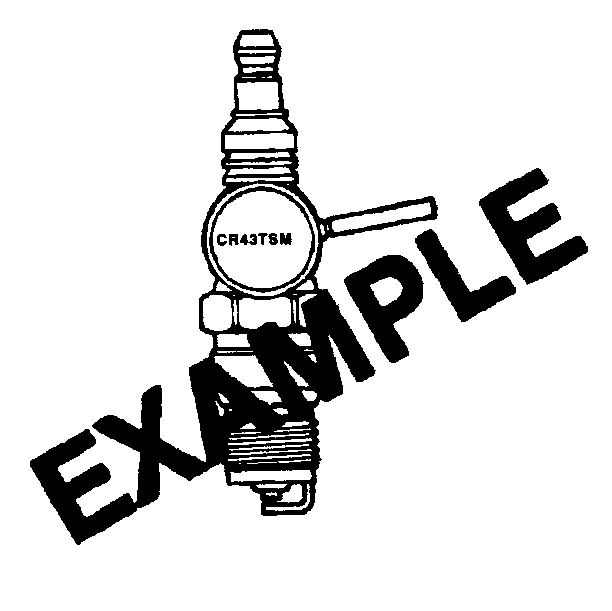Notice: These spark plugs have a ceramic insulator that is 3.175 mm (1/8 in) longer than earlier model spark plugs. Use a spark plug socket that is deep enough for these longer plugs (J 39358). Failure to do so could cause cracking of the insulator and arcing inside the plug resulting in an engine misfire.
Resistor type spark plugs with tapered seats are used. No gasket is needed on these plugs. These spark plugs are a High Efficiency (HE) spark plug that has a fine wire electrode, nicket plated shell and a platinum pad across from the electrode.

- Normal service is a mixture of idling, low speed, and high speed operation.
- The heat resistant, insulating boot covers the spark plug terminal.
- Corona discharge is a steady blue light appearing (in darkness) around the insulator, just above the shell crimp.
| • | Occasional high speed driving is essential to good spark plug performance. |
| • | Increased combustion heat burns away excess carbon deposits, which accumulate from frequent idling or stop-and-go driving. |
| • | The boot extends over a portion of the spark plug insulator. |
| • | These boots prevent engine misfiring. |
| • | Do not mistake this for a shorted insulator. |
| • | This is visible evidence of a high-tension field. |
| • | This has no effect on ignition system performance. |
| • | This discharge repels dust particles. |
| • | This leaves a clear ring on the insulator just above the shell. |
| • | This is not evidence that combustion gases are escaping. |
Step | Action | Value(s) | Yes | No |
|---|---|---|---|---|
DEFINITION: A visual inspection of the spark plug firing end. | ||||
1 |
Do you see a brown to grayish tan deposit with a slight electrode wear? | -- | ||
2 |
Is the repair complete? | 0.60" (2.2L) 0.45" (4.3L) | System OK | -- |
3 | Do you see dry, fluffy, black carbon deposits? | -- | ||
4 | This indicates poor ignition output, refer to Spark Plug Wire Resistance . Is the ignition coil to the distributor connection and/or the ignition coil(s) to the spark plug connections OK? | -- | -- | |
5 | Repair or install new parts as necessary. Is the repair complete? | -- | System OK | -- |
6 | Do you see wet, oily deposits with very little electrode wear? | -- | ||
7 |
Degrease, gap and reinstall the spark plug. | 0.60" (2.2L) 0.45" (4.3L) | ||
8 | Do you see red, brown, yellow and/or white colored coatings on the insulator? | -- | ||
9 | These are the by-products of combustion. Is the insulator heavily coated? | -- | ||
10 | Gap and install new spark plug(s). Tighten the spark plug, refer to Fastener Tightening Specifications . | -- | -- | -- |
11 | Are there heavy deposits of dark colored coatings, especially on the side of the plug facing the intake valve? | -- | ||
12 |
| -- | -- | |
13 | Is there a shiny, yellow glaze coating on the spark plug insulator? | -- | ||
14 |
| -- | -- | |
15 |
| -- | -- | |
16 |
Is the heat range correct? | -- | ||
17 | Check the torque value to ensure good spark plug seat to engine contact. Are the spark plugs tightened according to specifications? | 17 N·m (13 lb ft) (2.2L) or 15 N·m (11 lb ft) (4.3L) | ||
18 | The ignition timing may be over-advanced, refer to Section 6. Is the timing correct or are the components which control ignition timing operating properly?. | -- | ||
19 | Check for a lean air-fuel mixture, refer to Engine Controls. Is the air-fuel mixture too lean? | -- | ||
20 | Check the cooling system, refer to Engine Cooling. Is the cooling system operating properly? | -- | -- | |
